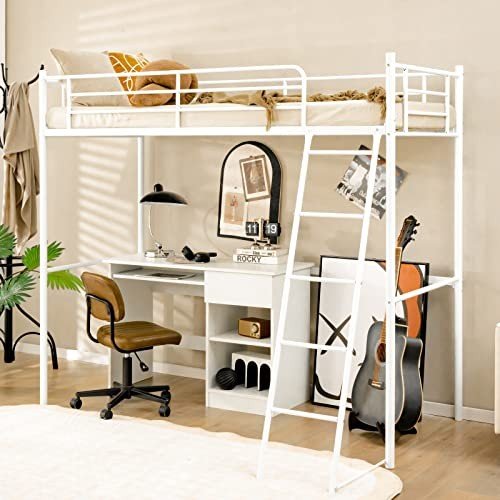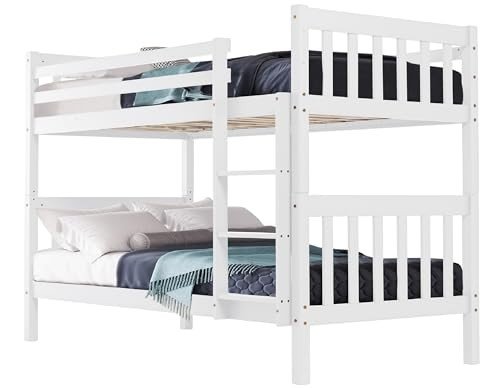15 Terms That Everyone Within The Bunk Beds Industry Should Know
페이지 정보
작성자 Helene Caskey 작성일25-09-19 14:36 조회2회 댓글0건관련링크
본문

Exploring Bunk Beds: A Comprehensive Guide
childrens bunk beds beds have long been a staple in kids's bed rooms, dorms, and even homes with restricted space. Not only do they provide a practical sleeping option, however they likewise develop an enjoyable and creative environment for children and a great space-saver for adults and families. This article will explore everything you need to understand about bunk beds, from types and materials to security tips and purchasing recommendations.
Table of Contents
- Types of Bunk Beds
- Standard Bunk Beds
- Loft Beds
- Triple Bunk Beds
- L-Shaped Bunk Beds
- Product Options
- Wood
- Metal
- Safety Considerations
- Buying Guide
- FAQs
Types of Bunk Beds
Bunk beds are available in different designs to suit various requirements and choices. Here's a breakdown of the most typical types:
Conventional Bunk Beds
Conventional bunks generally include 2 beds stacked vertically on top of one another. These beds are perfect for brother or sisters sharing a space or for maximizing sleeping space in guest rooms.
Loft Beds
Loft beds stand similarly to standard bunk beds but do not have a lower sleeping location. Instead, they often include a desk or seating location below, making them a great option for small rooms needing multifunctionality.
Triple Bunk Beds
Triple bunk beds are created for 3 occupants, with beds stacked in a three-tier setup. These are less common but can be a fun service for large households or sleepovers.
L-Shaped Bunk Beds
With one bed positioned horizontally and the other vertically, L-shaped bunk bed for adults uk beds are typically geared up with extra functions such as desks or storage drawers and can complement corner areas in a room.
Contrast of Bunk Bed Types
| Bed Type | Perfect Use | Description |
|---|---|---|
| Conventional | Shared bedrooms or guest rooms | Two beds stacked vertically |
| Loft | Small rooms requiring multi-purpose space | Upper bed with open space below |
| Triple | Big families or sleepovers | 3 beds stacked vertically |
| L-Shaped | Corner or versatile areas | A mix of vertical and horizontal beds |
Product Options
Bunk beds are made from numerous materials, with wood and metal being the most common. Each material has its advantages and disadvantages.
Wood
- Resilience: Generally robust and can endure years of use.
- Aesthetic Appeal: Offers a classic look that can mix with numerous decorations.
- Weight Capacity: Typically tougher; can support heavier weights.
- Drawbacks: May be more expensive than metal options and can be vulnerable to scratches.
Metal
- Toughness: Generally light-weight and easy to move but still sturdy.
- Modern Design: Often is available in streamlined designs, making it appealing for modern spaces.
- Affordable: Usually more economical than wood choices.
- Downsides: Can be cold to the touch in winters and might not have the exact same visual appeal for some purchasers.
Security Considerations
When it concerns bunk beds, security can not be overlooked. Here are crucial security tips to keep in mind:
- Guardrails: Ensure that the top bunk has guardrails sale on bunk beds both sides to prevent falls.
- Durable Construction: Check for a solid construct and durable materials to hold up against weight and motion.
- Weight Limit: Adhere to the maker's weight limit for both the upper and lower bunks.
- Ladder Design: Choose bunks with a safe, easy-to-climb ladder and avoid any sharp edges or rungs.
- Age Restrictions: Most makers recommend that kids under the age of six need to not sleep in the upper bunk.
Buying Guide
When shopping for adult bunk bed beds, think about the following factors to discover the best suitable for your needs:
- Space Availability: Measure the space size and ceiling height, making sure there is adequate space for the top bunk.
- Bed Size: Decide in between twin, complete, or larger sizes based on your requirements and the size of the room.
- Design Preference: Consider the general decoration of the bed room to discover an ideal style.
- Reduce of Setup: Look for a bunk bed that is uncomplicated to assemble.
- Spending plan: Bunk beds can be found in numerous rate ranges, so determine a spending plan before starting your search.
FAQs
1. What is the suggested age for kids to sleep on the leading bunk?
Kids aged six and older are typically advised to sleep on the leading bunk to decrease the risk of falls.
2. How can I make my bunk bed much safer?
To improve safety, make sure guardrails are correctly set up and examine that the bed is placed on a flat surface area. In addition, motivate kids to utilize the ladder thoroughly.
3. Can I convert a bunk bed into 2 separate beds?
Numerous bunk beds are created to be convertible. Inspect the manufacturer's specs for convertibility features.
4. What accessories are offered for bunk beds?
Common devices include beddings, storage drawers, staircases instead of ladders, and tented canopies for a fun visual appeal.
5. How do I maintain my bunk bed?
Regular checks for loose screws or structural integrity can assist ensure security. Dust the bed frequently and clean spills immediately to keep the materials in good condition.
Bunk beds are flexible and a space-efficient solution for numerous living circumstances, from kids's rooms to visitor lodgings. With many styles and materials offered, potential purchasers have a wealth of alternatives to consider, guaranteeing a mix of usefulness and visual appeals. By prioritizing safety and following the ideas detailed in this guide, people can find the best bunk bed that matches their space and way of life, all while producing a pleasurable sleeping environment.

댓글목록
등록된 댓글이 없습니다.
